Huskies are renowned for their striking appearance, boasting a magnificent coat that begs for grooming attention. However, a common misconception persists among some well-intentioned pet owners – the idea that shaving a Husky’s fur is a sensible practice. This article delves into the crucial reasons why you should never shave a Husky. Beyond mere aesthetics, understanding the science behind their remarkable double coat and the impact of shaving on their well-being is essential for responsible pet ownership. Let’s explore why preserving the natural beauty of a Husky’s fur is not just a matter of aesthetics but also a matter of their health and happiness.
Why Can’t You Shave A Husky?
Shaving a Husky is not advisable because they have a double coat that serves essential functions. The undercoat provides insulation, keeping them warm in winter and cool in summer. Shaving disrupts this natural temperature regulation, potentially leading to overheating or hypothermia. Moreover, their coat shields them from sunburn and skin problems. Shaving can increase their vulnerability to such issues. Overall, it’s best to keep Huskies’ coats intact and manage their fur through regular grooming rather than shaving.
Discuss The Role Of The Fur In Keeping Huskies Cool In Summer
Huskies are well-adapted to cold climates, but their fur also plays a crucial role in keeping them cool during the hot summer. Here’s how their fur aids in temperature regulation:
- Double Coat Structure: Huskies boast a unique double coat consisting of two layers: an outer guard coat and a soft, dense undercoat. While this coat is often associated with cold weather, it’s equally beneficial in hot weather. The undercoat, in particular, acts as a natural insulator. It traps a layer of air close to the skin, which prevents direct sunlight and heat from reaching the dog’s body. This insulating effect helps to maintain a relatively stable body temperature.
- Air Circulation: The double coat also aids in air circulation. The trapped air between the layers of fur functions as an excellent heat buffer. It allows air to flow close to the skin, facilitating heat dissipation from the body. This air circulation is similar to how insulation works in your home, keeping the interior cooler in the summer and warmer in the winter.
- Natural Sun Protection: The outer guard coat acts as a natural sunblock, shielding the skin from harmful UV rays. Shaving a Husky removes this protective barrier, making their skin more susceptible to sunburn and potential skin issues. Additionally, the exposed skin can heat up rapidly when exposed to direct sunlight.
- Sweating Mechanism: Huskies primarily have sweat glands in their paw pads and noses. Unlike humans, who sweat all over their bodies, Huskies primarily regulate their temperature through panting and the insulating properties of their coats. Shaving disrupts this natural cooling process, potentially causing them to overheat.
- Natural Shedding: Huskies undergo a natural shedding process, often called “blowing their coat,” which tends to be more pronounced in summer. This shedding helps them eliminate excess fur, allowing air to flow freely through the remaining coat. Shaving them removes this built-in mechanism for shedding excess heat.
Discuss The Risks Of Sunburn In Shaved Huskies
Shaving a Husky’s fur can increase the risk of sunburn for several reasons:
Loss of Natural Protection: A Husky’s double coat, consisting of an outer guard coat and a dense undercoat, is a natural barrier against the sun’s harmful ultraviolet (UV) rays. The outer guard coat is a shield, blocking most UV radiation from reaching the dog’s skin. When you shave a Husky, you remove this protective layer, exposing their sensitive skin to direct sunlight.
Vulnerable Areas: Shaved Huskies are especially susceptible to sunburn on areas with less fur cover, such as the belly, groin, and around the ears. These regions have thinner skin and less protection against UV radiation.
Lack of Pigmentation: Some Huskies have less pigmentation in their skin, which makes them more susceptible to sunburn. This is particularly true for dogs with predominantly white fur, pink skin, or lighter pigmentation in their nose and ear areas.
Increased Sun Exposure: Shaved Huskies may be more active and spend more time outdoors in the summer due to their discomfort from shaving. This increased sun exposure can further elevate the risk of sunburn.
Pain and Discomfort: Sunburn in dogs can be painful and uncomfortable. It may result in redness, blistering, itching, and even skin peeling. Sunburned skin can also become more sensitive to touch, causing your Husky distress and discomfort.
Long-Term Consequences: Repeated sunburns can lead to more severe skin issues, including the development of skin lesions, skin cancer, or other chronic skin conditions. Over time, these conditions can impact your Husky’s overall health and well-being.
To protect your Husky from sunburn, avoiding shaving their fur is essential. Instead, provide shade and limit their exposure to direct sunlight during peak hours. Use pet-safe sunscreen on areas with less fur cover, such as the belly, nose, and ears. Additionally, consider lightweight, breathable clothing designed for dogs to offer additional protection when necessary.
How Shaving Can Lead To Hypothermia In Cold Weather
Shaving a Husky’s fur in cold weather can potentially lead to hypothermia due to several factors:
- Loss of Insulation: Huskies have a double coat consisting of a dense undercoat and an outer guard coat. This double-layered coat provides natural insulation, trapping warm air close to their skin and protecting them from the cold. Shaving removes this insulation, leaving them exposed to the chilly temperatures.
- Reduced Body Heat Retention: The undercoat, in particular, is designed to retain heat. It works like a thermal blanket, keeping the dog warm even in frigid conditions. When shaved, Huskies lose this built-in mechanism for preserving body heat.
- Inability to Regulate Body Temperature: Huskies regulate their body temperature through vasodilation and vasoconstriction, where blood vessels near the skin expand or constrict to release or retain heat. When their fur is shaved, their skin is directly exposed to the cold, making it challenging to regulate their temperature effectively.
- Susceptibility to Wind Chill: Shaved Huskies are more susceptible to wind chill, which can rapidly cool their skin and lower their body temperature. Wind can strip away any remaining warmth from their bodies when their protective fur is absent.
- Shivering and Stress: Shaved Huskies are more likely to shiver in cold weather as their bodies struggle to maintain a stable temperature. Shivering indicates they are too cold and trying to generate heat. This condition can be physically and emotionally stressful for the dog.
- Risk of Hypothermia: A dog’s body temperature drops below the normal range (typically around 101-102.5°F or 38-39°C) can lead to hypothermia. Symptoms may include shivering, lethargy, confusion, muscle stiffness, and, in severe cases, loss of consciousness and organ failure. Hypothermia can be life-threatening if not addressed promptly.
In cold weather, it is crucial to allow Huskies to retain their natural insulation by not shaving their fur. If you’re concerned about excessive shedding or matting, regular grooming and brushing can help manage their coat without compromising their ability to stay warm. Additionally, provide your Husky with proper shelter bedding and avoid prolonged exposure to extreme cold temperatures to ensure their safety and well-being during winter.
Explanation Of How Huskies May Feel Vulnerable And Stressed After Shaving
Shaving a Husky’s fur can make them feel vulnerable and stressed for several reasons:
Loss of Natural Protection:
Huskies have a double coat that protects them from various environmental elements. When their fur is shaved, they lose this protective barrier, exposing their skin to the elements, including direct sunlight, wind, and debris. This loss of natural protection can make them feel physically vulnerable.
Temperature Discomfort:
Huskies rely on their double coat for insulation and temperature regulation. Shaving disrupts this natural mechanism, making them more susceptible to extreme cold and hot temperatures. In colder weather, they may feel uncomfortably cold, while in hotter weather, they may struggle to cool down efficiently. This discomfort can lead to stress and anxiety.
Sensory Overload:
With their fur shaved, Huskies may experience sensory overload as their skin becomes hypersensitive to various stimuli. They may feel every breeze, touch, or surface differently, which can be overwhelming and stress-inducing.
Social and Environmental Changes:
Shaving can result in changes in the dog’s appearance, which may affect how they perceive themselves and how other dogs and people perceive them. This can lead to social stress and anxiety. Additionally, a shaved Husky might need to be more comfortable and confident in their usual outdoor environments, further contributing to stress.
Body Image and Confidence:
Dogs, like humans, have a sense of body image and personal space. Shaving a Husky can alter their appearance significantly, and they may become self-conscious or lose confidence. This can lead to stress and insecurity.
Psychological Discomfort:
Shaving itself can be stressful for the dog. The noise of clippers, unfamiliar sensations, and the restraint required during grooming can all contribute to anxiety. Over time, a shaved Husky may associate grooming sessions with discomfort and stress.
Behavioral Changes:
Stress in Huskies can manifest in various behavioral changes, including increased restlessness, pacing, whining, barking, or aggression. Some dogs may withdraw and become less active or playful, while others may become more anxious and hyperactive.
To prevent these adverse effects, respecting a Husky’s natural coat and avoiding unnecessary shaving is essential. Instead, focus on regular grooming and maintenance to keep their coat healthy and comfortable. If you suspect your Husky is experiencing stress or discomfort after shaving, consult a veterinarian or professional groomer to address their specific needs and help them adapt to the changes.
Bottom Line
In conclusion, shaving a Husky is unnecessary and can harm their health and well-being. Their unique double coat is a natural defense system that regulates their body temperature, protects them from the elements, and prevents skin issues. Responsible Husky ownership entails respecting their natural attributes and embracing proper grooming practices to keep them happy and healthy.
FAQ’s
Will Husky fur grow back if shaved?
Yes, Husky fur will grow back if shaved. However, it may take several months for the fur to regrow fully, and the texture and appearance of the new fur may initially differ slightly from the original coat. Factors like the dog’s age, overall health, and genetics can influence the rate and quality of regrowth. Proper care, including a balanced diet and regular grooming, can support healthy fur regrowth.
Is it okay to cut huskies’ hair?
Cut a Husky’s hair, especially their double coat, is generally not recommended. Their coat serves essential functions in regulating temperature and protecting them from various elements. Cutting it can disrupt these natural mechanisms and potentially harm their well-being. Instead, consider regular grooming to maintain their coat without cutting. If you have concerns about their fur, consult a professional groomer or veterinarian for advice.
Is it animal abuse to shave a Husky?
Shaving a Husky’s fur is not considered animal abuse, but it is generally discouraged by experts and veterinarians. Huskies have a double coat that is crucial in regulating their temperature and protecting them from the elements. Shaving can disrupt these natural functions, potentially causing discomfort and health issues. It’s essential to prioritize the well-being of your Husky by understanding and respecting their unique coat needs, which usually do not involve shaving.

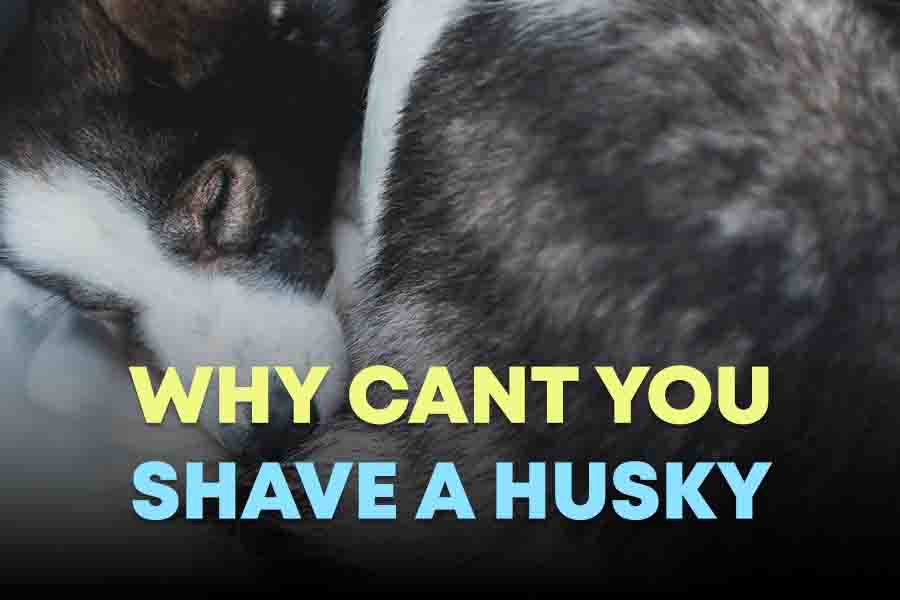
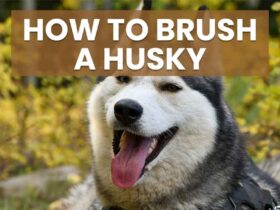
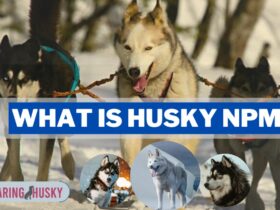
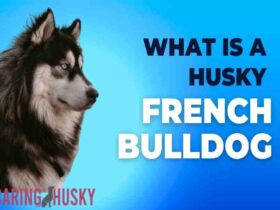
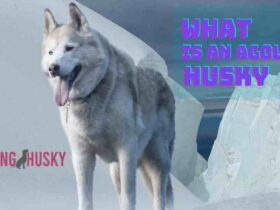
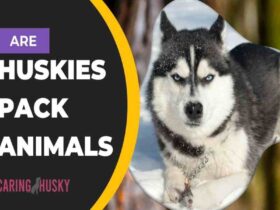
Leave a Reply